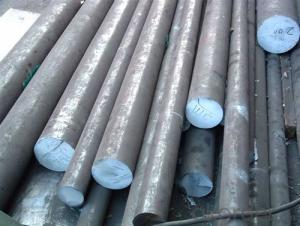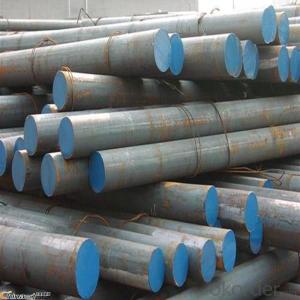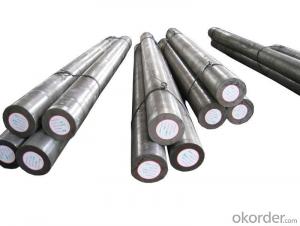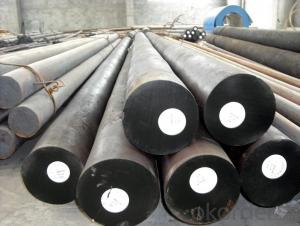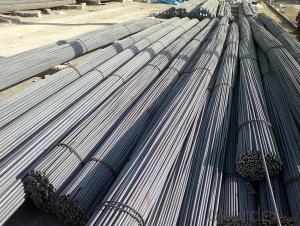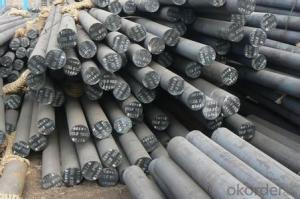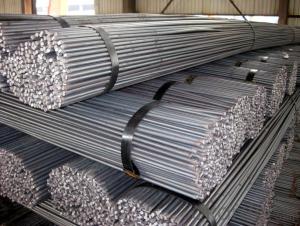1039 Alloy Steel Round Bar
- Loading Port:
- China main port
- Payment Terms:
- TT OR LC
- Min Order Qty:
- 5 m.t.
- Supply Capability:
- 100000 m.t./month
OKorder Service Pledge
OKorder Financial Service
You Might Also Like
Item specifice
1039 Alloy Steel Round Bar
1. Product Description
Item | 1039 Steel Bar,1039 Steel Rod,Carbon steel bar 1039, Carbon steel rod 1039,Alloy steel bar 1039,Alloy steel rod 1039, Alibaba best sellers 1039 alloy steel bar,1039 alloy steel round bar | |
Standard | GB,AISI,JIS,ASTM,EN,ASTM,etc | |
Material | 10#,S210C,S09CK,1010,C10E,15#,S15C,S15CK,1015,20#, S20C,S20CK,1020,C22,25#,S25C,1025,30#,S30C,1030,35#, S35C,1035,40#,S40C,1040,45#,S45C,1045,C45E,50#,S50C, 1050,55#,1055,60#,C60,20Mn,1022,25Mn,30Mn,40Mn,50Mn, 20Mn2,1320,30Mn2,1330,1335,1340,1033,1039etc | |
Shape | Round,Flat,Square,Angle,Hexagonal,etc | |
Surface | Black painted,Galvanized, | |
Dimension | Round bar | Diameter:4mm-800mm |
Angle bar | 3mm*20mm*20mm-12mm*800mm*800mm | |
Square bar | 4mm*4mm-100mm*100mm | |
Flat bar | Thickness:2mm-100mm | |
Width:10mm-500mm | ||
Hexagonal bar | 4mm-800mm | |
Length:2m,4m,5.8m,6m,11.8m,12m,or as required | ||
Price Term | EXW,CFR,FOB,CIF,etc | |
Payment Term | L/C,T/T,D/P,etc | |
Package | Standard seaworthy export package or as customer’s request. | |
Export To | Singapore,Bangladesh,Italy,India,Indonesia,Spain,Brazil,Iran, Peru,Chile,Slovenia,Cameroon,Thailand,Turkey,etc | |
Delivery Time | According to order’s quantity. | |
Application | Carbon steel rod applies to chemical industry,shipping industry, manufacturing industry,construction,decorate industry,electric power,pump shafts,sanitary wares,furniture handles,boiler,high temperature resistant,low temperature resistant,corrosion resistant. | |
Contact | My all info are below,please feel free to contact me. | |
2. Photo Show

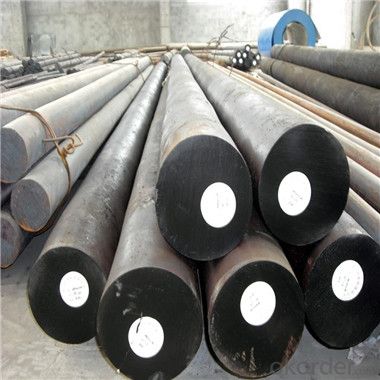
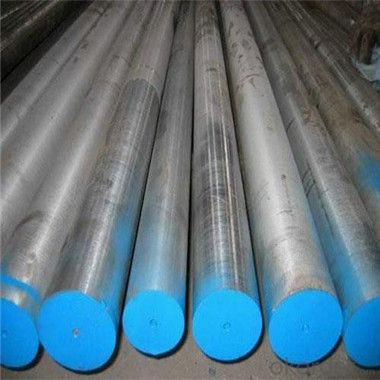
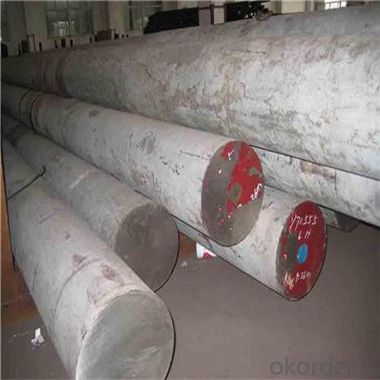
3. Chemical Composition
Item | C | Si | Mn | P ≤ | S ≤ |
1039 | 0.37-0.44 | 0.20-0.35 | 0.70-1.00 | 0.040 | 0.050 |
- Q:What are the different grades of heat-treated steel round bars?
- The different grades of heat-treated steel round bars include, but are not limited to, AISI 4140, AISI 4340, AISI 8620, and ASTM A105.
- Q:What is the maximum sulfur content allowed for steel round bars?
- The maximum sulfur content allowed for steel round bars can vary depending on the specific grade and specification. In general, the sulfur content in steel is controlled to ensure good machinability and overall quality of the material. For most commercial grades of steel round bars, the maximum sulfur content is typically limited to around 0.05% to 0.08%. However, it is important to note that certain specialized grades or applications may have different limits or requirements. It is always advisable to consult the relevant standards or specifications for the specific grade of steel round bars to determine the maximum sulfur content allowed.
- Q:What are the common finishes for steel round bars?
- The common finishes for steel round bars include hot rolled, cold drawn, turned and polished, and centerless ground.
- Q:What is the difference between a polished and a precision ground steel round bar?
- A polished steel round bar refers to a bar that has undergone a polishing process to achieve a smooth and shiny surface finish. This process involves using abrasive materials to remove any imperfections or roughness on the surface of the bar. The end result is a visually appealing bar with a high level of aesthetic appeal. On the other hand, a precision ground steel round bar is a bar that has been precisely ground to achieve tight dimensional tolerances and a smooth surface finish. This grinding process involves removing material from the surface of the bar using grinding wheels or other cutting tools. The purpose of precision grinding is to ensure that the bar meets specific size and shape requirements, making it suitable for use in applications that demand precise dimensions and tight tolerances. In summary, the main difference between a polished and a precision ground steel round bar lies in the purpose of the respective finishing processes. Polishing is primarily done for aesthetic reasons, enhancing the appearance of the bar, while precision grinding focuses on achieving precise dimensions and tight tolerances to meet specific technical requirements.
- Q:Can steel round bars be used for making exercise equipment?
- Steel round bars are a viable option for manufacturing exercise equipment due to their durability and strength. These bars are renowned for their ability to withstand heavy loads and provide stability during workouts, making them suitable for constructing various types of fitness equipment. Weightlifting bars, dumbbells, barbells, and other exercise equipment that require reliable materials can be created using steel round bars. Moreover, these bars can be easily machined, welded, and shaped into different forms, allowing for customization and versatility in exercise equipment design. As a result, steel round bars are favored by gym equipment manufacturers and fitness enthusiasts alike.
- Q:How are steel round bars manufactured?
- Steel round bars are manufactured through a process known as hot rolling. This process starts with heating a large steel billet in a furnace until it becomes soft and malleable. The billet is then passed through a series of rollers which compress and shape it into a round bar. The first step in hot rolling is the roughing mill, where the billet is passed through multiple sets of rollers to reduce its thickness and increase its length. This process also helps to ensure that the steel maintains a consistent temperature throughout. After the roughing mill, the bar enters the finishing mill, where it is further reduced in size and given its final shape. The finishing mill typically consists of several sets of rollers that gradually decrease the diameter of the bar while increasing its length. This process is repeated until the desired dimensions are achieved. During the rolling process, the steel round bar is constantly monitored for quality control. Any imperfections or defects that may arise are detected and corrected to ensure the final product meets the required specifications. Once the bar reaches its final dimensions, it is cooled and cut to the desired length. The cooling process can be done using air, water, or a combination of both. After cooling, the bar is inspected for any surface defects and undergoes further processing if necessary. In some cases, additional treatments such as heat treatment or surface finishing may be applied to enhance the properties and appearance of the steel round bar. Overall, the manufacturing of steel round bars involves a combination of heating, rolling, cooling, and cutting processes to produce a high-quality product that meets the specific requirements of various industries.
- Q:How do you determine the straightness of a steel round bar?
- To determine the straightness of a steel round bar, there are several methods that can be used. One common method is visual inspection, where the bar is carefully examined for any visible bends, twists, or deviations from a straight line. This can be done by placing the bar on a flat surface and checking for any gaps or unevenness between the surface and the bar. Another method is to use a straightedge or a precision ruler. By placing the straightedge or ruler along the length of the bar, any deviations from a straight line can be easily detected. This method allows for more precise measurements and can help identify even slight bends or curves. Measuring devices such as dial indicators or laser alignment tools can also be used to determine the straightness of a steel round bar. These devices provide more accurate measurements and can quantify the degree of straightness by providing numerical readings of any deviations from a straight line. It is important to note that the acceptable level of straightness may vary depending on the specific application or industry standards. In such cases, specific tolerances or guidelines may need to be followed to ensure that the steel round bar meets the required straightness criteria. Overall, determining the straightness of a steel round bar requires careful visual inspection and the use of appropriate measuring tools to ensure that it meets the necessary straightness standards for its intended use.
- Q:How do you calculate the weight of a steel round bar?
- To determine the weight of a steel round bar, one can utilize the following equation: Weight = (Diameter^2 / 4) * Length * Density Within this equation, the Diameter signifies the round bar's diameter, Length denotes the bar's length, and Density represents the steel material's density. Initially, it is imperative to precisely measure the steel round bar's diameter. Subsequently, square the diameter by multiplying it by itself. Proceed to divide the outcome by 4. This shall yield the cross-sectional area of the round bar. Following this, multiply the cross-sectional area by the length of the bar. Lastly, multiply this value by the density of the steel material. Typically, the density of steel is around 7850 kg/m^3. The outcome of this computation shall furnish the weight of the steel round bar in either grams or kilograms, contingent upon the units implemented for the length and density.
- Q:What are the advantages of using phosphorus-alloy steel round bars?
- Phosphorus-alloy steel round bars possess several advantages: 1. Greater strength: These bars exhibit higher tensile strength in comparison to standard steel bars. This increased strength makes them ideal for applications necessitating a greater load-bearing capacity, such as the construction and automotive industries. 2. Heightened corrosion resistance: Phosphorus-alloy steel demonstrates superior resistance to corrosion when compared to regular steel. Consequently, it boasts improved durability and longevity, particularly in environments with high moisture content or exposure to chemicals. 3. Enhanced machinability: Phosphorus-alloy steel showcases excellent machinability, enabling it to be easily shaped, cut, and formed into various designs or structures. This characteristic makes it the favored choice for industries requiring precision shaping, such as manufacturing and engineering. 4. Diminished brittleness: Phosphorus-alloy steel manifests a lower degree of brittleness in contrast to other steel types. Therefore, it is less prone to breaking or fracturing under sudden impacts or stress, rendering it a safer option for applications where structural integrity is paramount. 5. Cost-effectiveness: Despite its enhanced properties, phosphorus-alloy steel round bars remain cost-effective when compared to other specialty alloys. This affordability renders them a more economical choice for industries seeking high-performance materials without exceeding their budget. 6. Improved weldability: Phosphorus-alloy steel round bars exhibit exceptional weldability, facilitating easy and secure welding connections. This attribute makes them suitable for applications necessitating strong and reliable welded joints, such as construction or fabrication projects. In conclusion, phosphorus-alloy steel round bars offer increased strength, heightened corrosion resistance, enhanced machinability, diminished brittleness, cost-effectiveness, and improved weldability. These advantages establish them as the favored choice for various industries that require high-performance materials.
- Q:Can steel round bars be used for making handrails?
- Yes, steel round bars can be commonly used for making handrails due to their durability and strength.
1. Manufacturer Overview |
|
|---|---|
| Location | |
| Year Established | |
| Annual Output Value | |
| Main Markets | |
| Company Certifications | |
2. Manufacturer Certificates |
|
|---|---|
| a) Certification Name | |
| Range | |
| Reference | |
| Validity Period | |
3. Manufacturer Capability |
|
|---|---|
| a)Trade Capacity | |
| Nearest Port | |
| Export Percentage | |
| No.of Employees in Trade Department | |
| Language Spoken: | |
| b)Factory Information | |
| Factory Size: | |
| No. of Production Lines | |
| Contract Manufacturing | |
| Product Price Range | |
Send your message to us
1039 Alloy Steel Round Bar
- Loading Port:
- China main port
- Payment Terms:
- TT OR LC
- Min Order Qty:
- 5 m.t.
- Supply Capability:
- 100000 m.t./month
OKorder Service Pledge
OKorder Financial Service
Similar products
New products
Hot products
Related keywords

